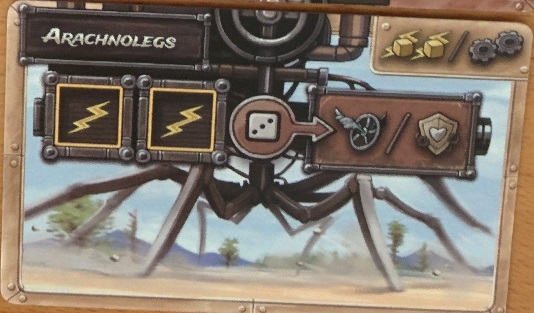How many activations?

The board game Steampunk Rally is a game about racing using inventions, activating them with dice to gain motion required to travel to the finish line.
In the image above, we see the part Arachnolegs. This part takes two yellow dice (both are fair six-sided dice), adds their top faces together, divides it by three, and truncates it down; the result is the number of activations of the part. (In this case, an activation is "either gain a motion or gain a reinforcement", although this is not necessary for the problem.)
As an example, if we roll a 2 and a 5, they add up to 7. Dividing by three and truncating, this gives 2 activations.
Assume you roll two yellow dice and immediately use both of them to activate this part. What is the expected number of activations you will get?
In short: You roll two dice, take its sum, divide it by three, and truncate the result. What is the expected value of this number?
Your answer will be in the form , where are positive integers that are relatively prime. Submit .
The answer is 3.
This section requires Javascript.
You are seeing this because something didn't load right. We suggest you, (a) try
refreshing the page, (b) enabling javascript if it is disabled on your browser and,
finally, (c)
loading the
non-javascript version of this page
. We're sorry about the hassle.
We can simply tabulate up the possible values we can get by rolling two dice, together with their probabilities and number of activations:
According to the definition of expected value, the expected number of activations is thus:
E [ activations ] = P ( 0 activations ) ⋅ 0 + P ( 1 activation ) ⋅ 1 + P ( 2 activations ) ⋅ 2 + P ( 3 activations ) ⋅ 3 + P ( 4 activations ) ⋅ 4 = 3 6 1 ⋅ 0 + ( 3 6 2 + 3 6 3 + 3 6 4 ) ⋅ 1 + ( 3 6 5 + 3 6 6 + 3 6 5 ) ⋅ 2 + ( 3 6 4 + 3 6 3 + 3 6 2 ) ⋅ 3 + 3 6 1 ⋅ 4 = 3 6 0 + 3 6 9 + 3 6 3 2 + 3 6 2 7 + 3 6 4 = 3 6 7 2 = 2
Thus, expressed in the required form, we obtain q p = 1 2 , or p + q = 3 .